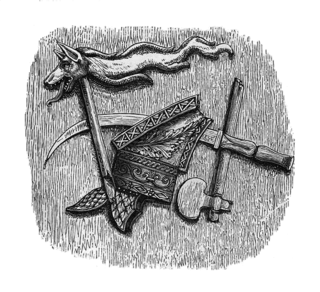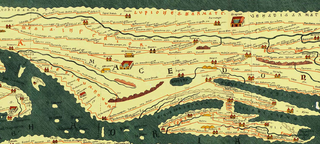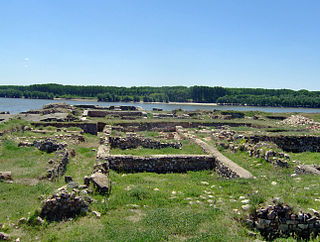Romula or Malva was an ancient city in Roman Dacia, later the village of Reşca, Dobrosloveni Commune, Olt County, Romania. It was the capital of Dacia Malvensis, one of the three subdivisions of the province of Dacia.
Aelius Catus was a Roman commander near the Danube who, according to Strabo's geography, transplanted 50,000 Getae from what is now Muntenia in Romania far to the south of Danube, in Moesia.

Comosicus was a Dacian king and high priest who lived in the 1st century BC. The only reference to Comosicus is a passage in the writings of the Roman historian Jordanes.

Amutria was a Dacian town close to the Danube and included in the Roman road network, after the conquest of Dacia.

Grigore George Tocilescu was a Romanian historian, archaeologist, epigrapher and folkorist, member of Romanian Academy.

Capidava was an important Geto-Dacian center on the right bank of the Danube. After the Roman conquest, it became a civil and military center, as part of the province of Moesia Inferior, modern Dobruja.
The Roman castra Arutela is a historical monument, situated between Paușa and Căciulata, near the town Călimănești. It is estimated to have been constructed between 137 – 138 A.D. The building lies on the left bank of the Olt River, nearby the Cozia Monastery and the Turnu hydropower complex.
The fort was part of the defensive system of the Roman province of Dacia in the 2nd and 3rd centuries AD. The ruins of a contemporary nearby defensive ditch was also unearthed. The ruins of the castellum are located in Abrud (Romania).
The castra of Poiana was a fort in the Roman province of Dacia. It was erected in the 2nd century AD and abandoned in the next century.

The Castra of Ighiu was a fort made of earth in the Roman province of Dacia. Its dating is uncertain. The traces of the one time earthwork can be identified on the Măguligici Hill in Ighiu (Romania).
It was a fort in the Roman province of Dacia.
The castra of Crâmpoia was a fort in the Roman province of Dacia. It was made of earth in the 2nd century AD. The Romans abandoned the fort in the 3rd century. Its ruins are located in Crâmpoia, Romania.
The castra of Costești was a fort in the Roman province of Dacia. Erected and abandoned by the Romans at an uncertain date, its ruins are located in Costești on a hilltop, at an altitude of 1203 meters.

The castra of Târsa was a temporary fort erected by the Romans during the Trajan's Dacian Wars.
The castra of Fâlfani was a fort built in the 2nd century AD in the Roman province of Dacia. It was abandoned in the 3rd century. Its ruins are located on a hill in Fâlfani.
The castra of Gresia was a fort in the Roman province of Dacia. Existing in the 2nd and 3rd centuries AD, its ruins are located in Gresia.
The castra of Livezile was a castra in the Roman province of Dacia, located in the north side of the modern commune of Livezile in the historical region of Transylvania, Romania. The fort was erected and surrounded by a ditch in the 2nd century AD. The castra was abandoned in the 3rd century and its ruins are still visible.
The castra of Pinoasa was a fort in the Roman province of Dacia. Matei Dan dates the castra to the period of the Dacian Wars. Its ruins were destroyed by excavations at the Rovinari Coal Mine.







